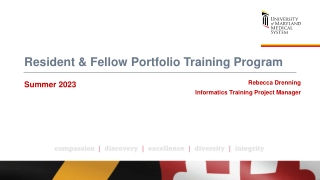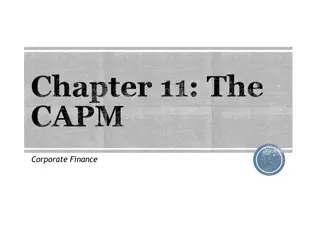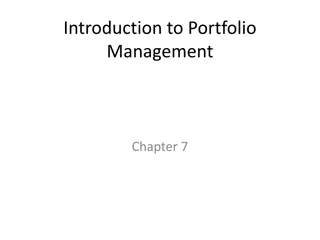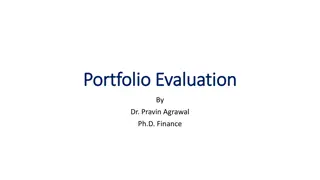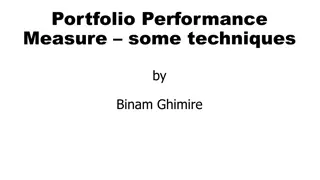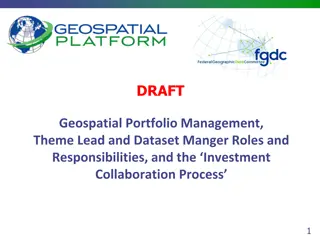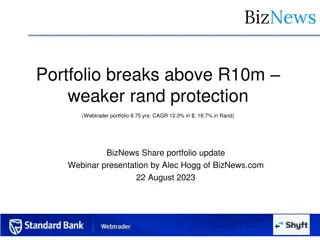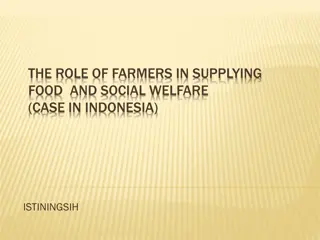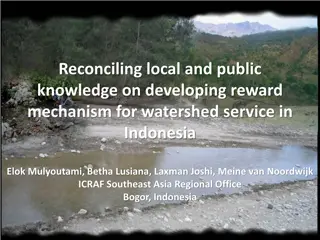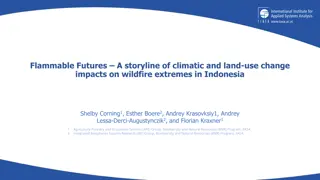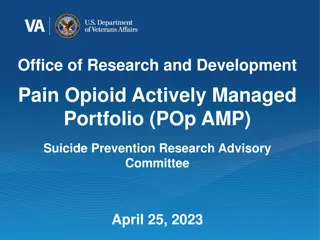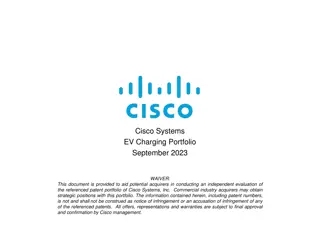Overview of FREDDI Project Portfolio in Indonesia
The FREDDI project portfolio in Indonesia involves the design and establishment process of the Funding Instrument for REDD+. It aims to support emissions reduction efforts, implement the REDD+ National Strategy, strengthen institutional frameworks, promote a payment-for-performance approach, and ensure sustainable and effective management of REDD+ funds.
Download Presentation

Please find below an Image/Link to download the presentation.
The content on the website is provided AS IS for your information and personal use only. It may not be sold, licensed, or shared on other websites without obtaining consent from the author.If you encounter any issues during the download, it is possible that the publisher has removed the file from their server.
You are allowed to download the files provided on this website for personal or commercial use, subject to the condition that they are used lawfully. All files are the property of their respective owners.
The content on the website is provided AS IS for your information and personal use only. It may not be sold, licensed, or shared on other websites without obtaining consent from the author.
E N D
Presentation Transcript
FREDDI Project Portfolio: A Work in Progress Agus P. Sari | REDD+ Special Team |President's Delivery Unit for Development Monitoring and Oversight (UKP4) South-South Knowledge Exchange on National REDD+ Fund Architectures| Second Workshop: Aligning Disbursements with Strategic Objectves and Modes of Delivery | Oslo, October 28, 2013
FREDDI: Design and Establishment Process as Funding Instrument for REDD+ in Indonesia Multi Stakeholder Consultation Process (Workshop, FGD dan Bilateral Consultation) Proposed Design, Structure, Modality & Guiding Principles Finalization the design of FREDDI Final Design & Establishment of FREDDI by REDD+ Agency Direction & Mandate based on Presidential Regulation 62/2013 Consultation and Testing Process on FREDDI s Elements at Sub National Level FREDDI or Fund for REDD+ Indonesia is designed as a funding instrument of REDD+ Agency that is responsible for managing, channeling and mobilizing REDD+ funds in a transparent, effective, efficient, fair and accountable in support to achieving the REDD+ National Strategy. Presidential Regulation 62/2013 regarding REDD+ Agency issued in August 2013 defines Funding Instrument as: funding management instrument that is established by the Head of the REDD+ Agency to guarantee a transparent management of fund that is transparent, accountable, effective in accordance with the guidelines and REDD+ funding safeguards pursuant to the prevailing laws and regulations
National MRV Agency Emission Reduction Verification Safeguards Unit REDD+ Agency MRV Unit of REDD+ Agency Report on Verified Emission Reduction Safeguards Committee Report on Emission Reduction Sub-National MRV Unit Board of Trustee FREDDI Disbursement and Investment Committee Measurement FREDDI Trustee REDD+ FREDDI Secretariat Support Facility Partner Agencies Structure of FREDDI Executing Agencies Grant for Programs, Projects and Activities
FREDDI: Overall Objectives Support the emissions reduction efforts from deforestation and forest degradation in Indonesia; Support the implementation of the REDD+ National Strategy Support the institutional strengthening and further work of the REDD+ Agency through Funding Window 1; Promote payment for performance approach; Provide funding that is complimentary to existing sources including national budget, regional budget and other donors Ensure that REDD+ funding is sustainably and effectively managed, disbursed and mobilized further.
FREDDI: Guiding Principles Effectiveness, Efficiency, Fairness, Transparency and Accountability; Government of Indonesia leadership in design, management and governance of FREDDI; Ensuring that PRISAI as safeguards are part of FREDDI operation and REDD+ Projects; Flexibility to finance national initiatives, provincial priorities, demand-driven proposals, and small grants. 5
Addressing Key Challenges : The five pillars of the National REDD+ Strategy Legal review, reform, and enforcement. Institutional setting and strengthening. Awareness raising and paradigm shifting. Stakeholder engagement. Strategic programs through Sustainable landscape management; Sustainable natural resources management and Conservation & rehabilitation.
Modality 1.A: Pure Grant Final Stage of Design Consist of small scale, medium and large grant. Grant is channeled with the priority on readiness activities, infrastructure development and capacity building. Modality 1.B: Performance-based Grant Final Stage of Design Consist of small scale, medium and large grant. Grant is channeled based on an agreed upon verified performance covering emission reduction activities and the activities that support emission reduction target. Modality 2: Performance Aggregator Ongoing design process. Applied once the MRV system is ready. Returns are expected in terms of performance units. Sequential Modality Modality 3: Investment Ongoing design process. Returns are expected in terms of monetary and performance units. Applied once the readiness, MRV mechanism and the capacity are in place and ready.
Pipeline Portfolio Development Provincial Strategy and Action Plan (SRAP) Ongoing Initiatives (Ministry/Agency and ex REDD+ Task Force Ongoing Initiatives (DAs) RAN GRK RAN-REDD Pipeline of Initiatives
FREDDI : Funding Windows As support mechanisms of FREDDI in order to achieve its main objective by taking into account the pipeline development portfolio and the board array of stakeholders, scale, target and the duration of project. Strategic Window: Readiness, National Priority and Emergency Intervention Sub-National Initiatives Competitively-Selected Initiatives Small-Grants
Generic Criteria for Small Scale Quick : Location of project, track-record of implementing entity, stakeholders engagement on the ground, size project, capacity & management resources of implementing entity. Impactful : Ability to achieve measurable emission reduction or to be transitioned into emission reduction future activities, Compatibility with jurisdictional and nested approach (can be replicated), Compatibility with STRADA SRAP, STRANAS and Funding Windows of FREDDI, Exposure to other REDD+ Taskforce elements (MRV, Legal, etc.) Sustainable : Equipped with elements to ensure sustainable implementation of projects for long period of time (e.g. intensive capacity building & transfer of knowledge for implementing entities for project implementation, including management, monitoring & evaluation and reporting).
Generic Criteria for Large Scale Based on SRAP Readiness Criteria, generic criteria are : Location of projects/program (jurisdictional & nested approach); Compatibility with REDD+ National Strategy n pillars; Support & capacity of sub-national government (provincial/district) from management, regulatory & budget perspective completion); Reference Emission Level (REL); Existing projects/activities on the ground. (including SRAP 13
Funding Windows : Simulation for Pilot NATIONAL PRIORITY SUBNATIONAL PRIORITY COMPETITIVE CYCLE SMALL GRANTS Indigenous Community Forest Management Jurisdictional Approach in existing potential projects (e.g Berau and West Kutai District) Support to SRAP based on thematic under STRANAS pillars Programmatic Community Based Land Rehabilitation (Green Village) Performance Aggregation on performing Demonstration Activities Jurisdictional Approach in Peat-land area (e.g Kapuas in Central Kalimantan) Programmatic Community Based Alternative Livelihoods Ongoing Initiatives under REDD+ Taskforce & REDD+ Special Team Jurisdictional Approach in area with pristine forest area (e.g Murung Raya in Central Kalimantan) Programmatic Community Based Forest Fire Management Further developing KPH model, focusing on existing area Programmatic Green School Curriculum Project


